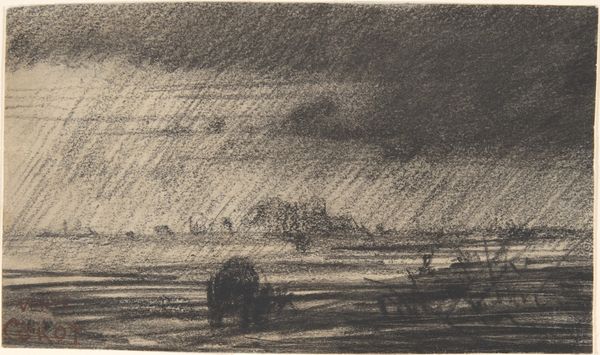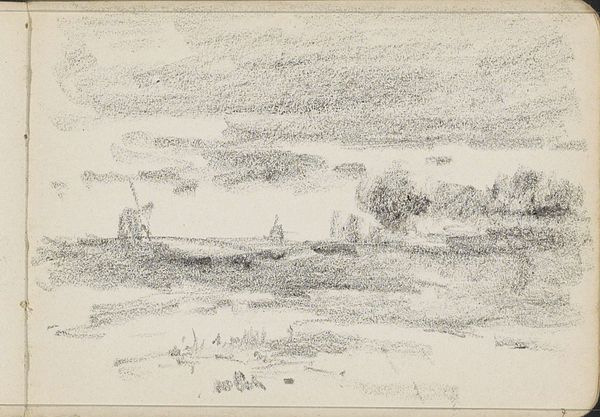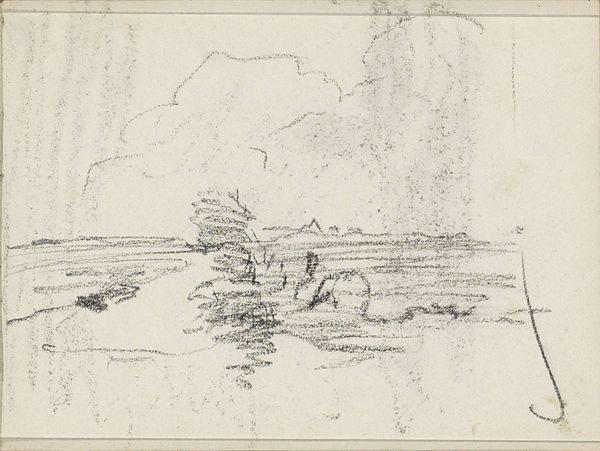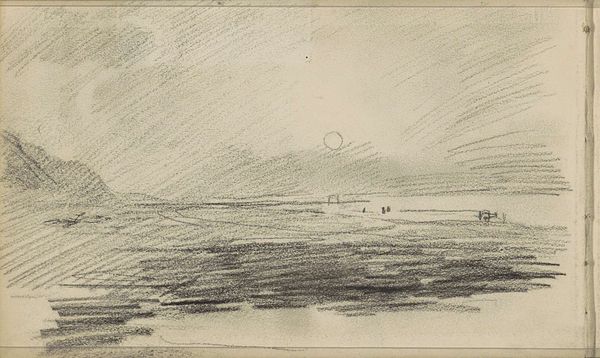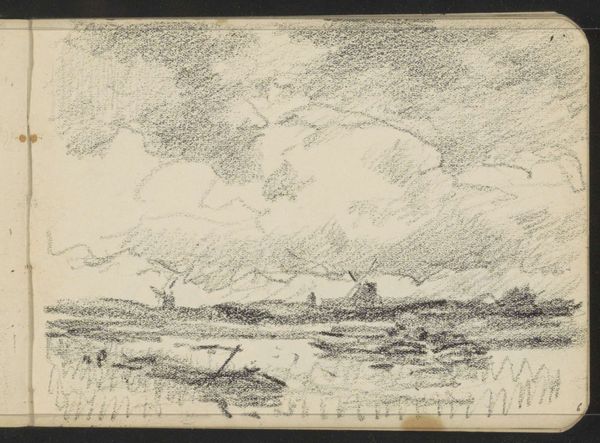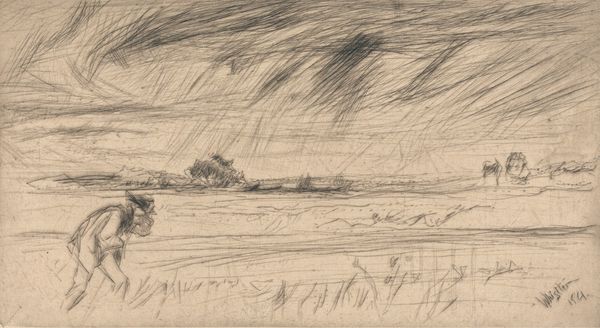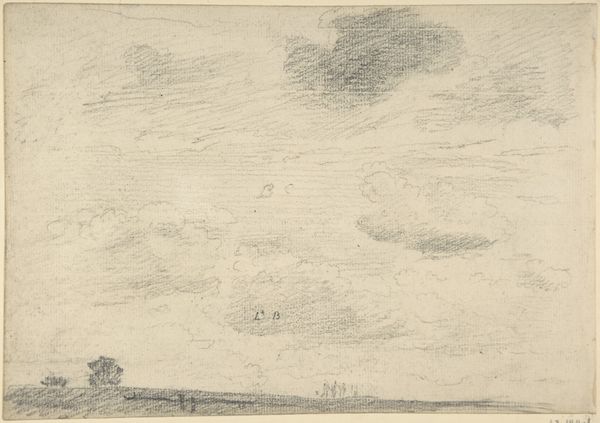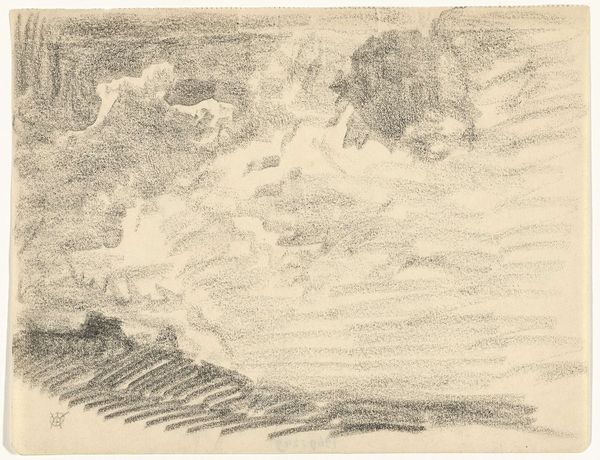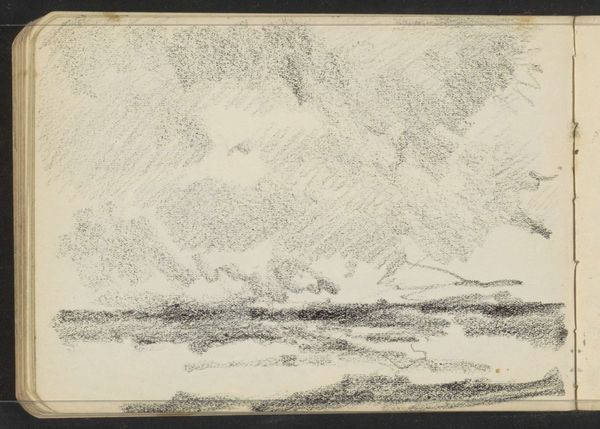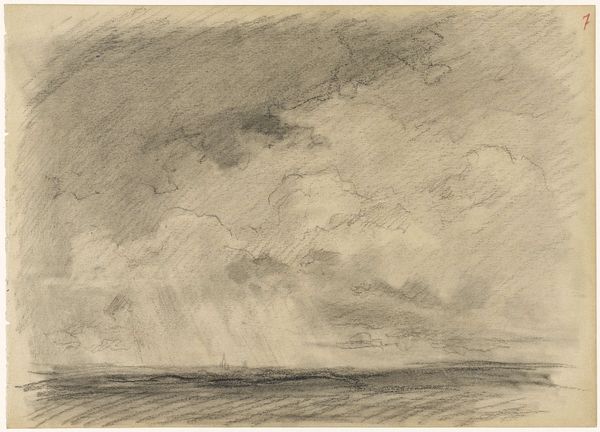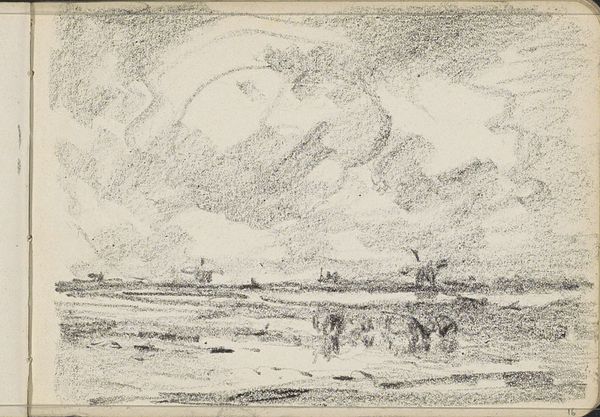
drawing, graphite
#
drawing
#
ink drawing
#
pen sketch
#
landscape
#
form
#
line
#
graphite
Dimensions: height 131 mm, width 191 mm
Copyright: Rijks Museum: Open Domain
Editor: Here we have Egbert Rubertus Derk Schaap's "Landschap met dreigende lucht," placing its creation sometime between 1872 and 1939, crafted using graphite and ink. It has such a moody and dramatic feeling, emphasized by the contrast between the turbulent sky and the bleak landscape. How do you interpret this work, particularly considering the artist's socio-political context? Curator: It's intriguing how Schaap captures a specific atmosphere with such minimal means. These landscape drawings from the late 19th and early 20th centuries were often exercises in capturing the fleeting effects of light and weather, very much within the tradition of plein air painting. The "threatening sky" is less a symbolic depiction of angst and more about rendering a natural phenomenon that suggests both grandeur and the overwhelming power of nature. But where might such imagery find its socio-political impact? Consider this: During periods of rapid industrialization and urbanization, such art offered an idealized view of nature, subtly critiquing the changing landscape shaped by those disruptive forces. Editor: That makes sense. The emphasis on the "untouched" natural world becomes a visual argument for conservation or perhaps a nostalgic look back. Do you think the starkness of the drawing plays into that feeling? Curator: Precisely. The choice of graphite and ink lends a certain immediacy and rawness to the scene. Instead of focusing on details, Schaap emphasizes the overall mood, the *feeling* of being in that space. One can further look at the institutional framework supporting and shaping such artistic production. Galleries promoting such works reinforced those messages about nature and national identity. The art market's appreciation of "pure" landscape became itself a political act of aligning art with a conservative sensibility, as one promoting a myth of regional pride over revolutionary internationalism. Editor: I hadn't considered the art market itself as a political force, that is quite an eye opener. Curator: It is through understanding the social and institutional roles art occupies, in concert with grasping the cultural mindset behind the subject being pictured, that the complete reading of a given artwork may emerge. Editor: This was amazing, thank you!
Comments
No comments
Be the first to comment and join the conversation on the ultimate creative platform.
